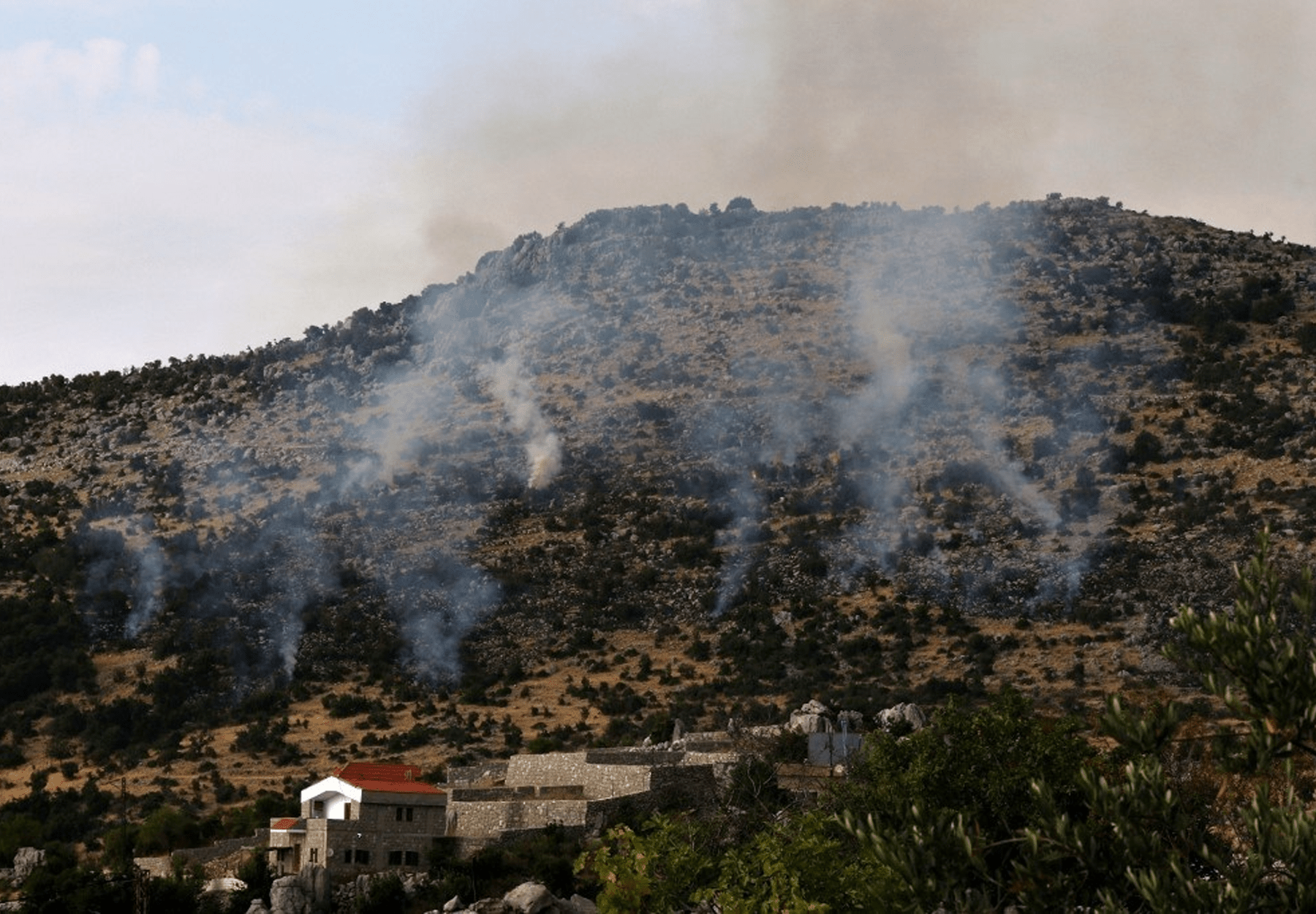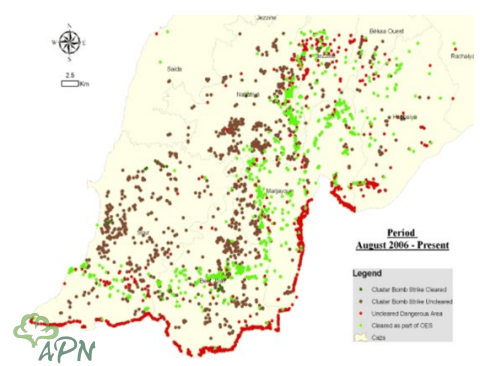
APN | Amman
November 2022
APN, in collaboration with UN-Habitat and Global Land Tool Network (GLTN), conducted a comprehensive study on “Land and Conflict in the Arab Region”. The study, a first of its kind, covers eleven countries and twelve case studies; the first of which has been published by UN-Habitat. The significance of the study lies in the fact that it reflects the priorities and aspirations of the Arab civil society in research studies, through the adoption of Arab academic expertise and documentation which places the Arab vision at the heart of analysis and the presentation of facts.
The team, which is made up of APN General Manager Mariam Al Jaajaa; APN research and advocacy officer, Elle Ambler; American University of Beirut professor of Ecosystem Management in the Faculty of Agricultural and Food Sciences, Dr Rami Zurayk; and Minerva Sadek; sought to expose the sinister intentions of the enemy during the 2006 War which lasted for two months until the UN-brokered ceasefire went into effect on the morning of 14 August 2006.
According to the study, the war was a means by which the occupation sought to cause long-term damage by targeting agricultural lands (particularly in Southern Lebanon) with munitions, mines, and cluster bombs with the aim of establishing an empty “buffer area” through the displacement of families with a majority working in the agriculture sector. This was meant to be a permanent measure and not just a temporary one during the war.
The Lebanon case study found strong evidence of the Israeli occupation using starvation as a military tactic. This is done by undermining food security for Lebanese people through the violent disruption of the growing season in the country, especially seeing that the timing of the bombing coincided with the peak of the harvesting season in areas where the contribution of the agricultural sector to the gross domestic product (GDP) amounts to 80%, in addition to leaving a long-lasting impact on the damaged land for many years to come, and the fact that bombing had intensified immediately prior to the ceasefire announcement.
The study also pointed to changes in land use where access had become dangerous and life-threatening even after the ceasefire was announced. 21 people died and dozens were injured by cluster bombs and mines exploding on farmers, shepherds, and children, who are particularly vulnerable because most mines and unexploded bombs do not appear dangerous and are often disguised with ribbons to look like children’s toys or canned drinks to entice people to pick it up.
Furthermore, the study highlighted intensive demining efforts and clearing 68% of the affected land before the end of 2017, despite Israel’s refusal to hand over maps of mines to international bodies, associations, and organizations working on this issue.
It should be noted that APN was aware, during the preparation of this study, of the responsibility it bears as a non-profit organization from the Arab region that refuses conditional funding. If such studies are not prepared from an ethical, equitable, and just perspective to ensure our right to civil peace, will be a sword hanging over our necks and a catalyst for the perpetuation of war and the subjugation of our people.


